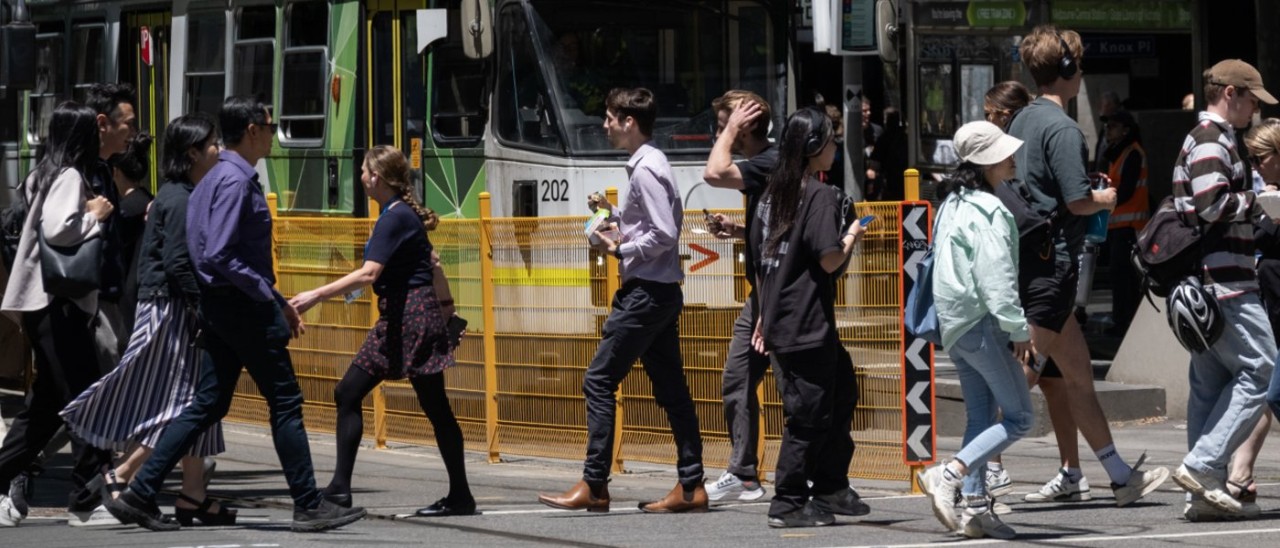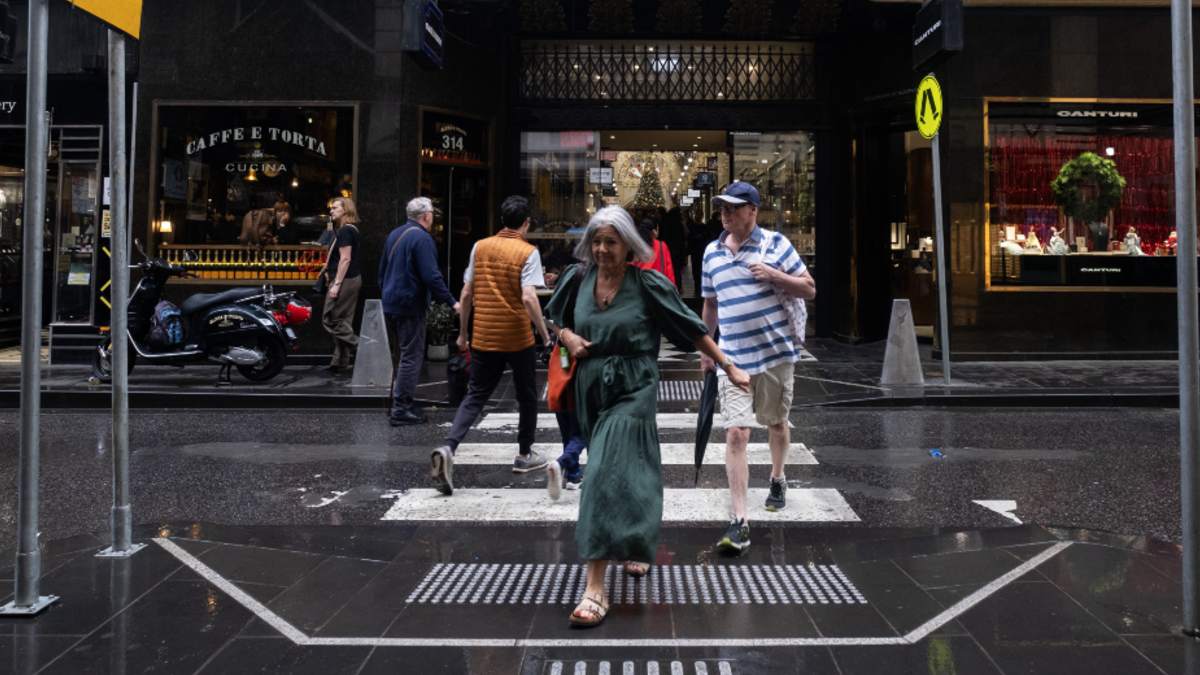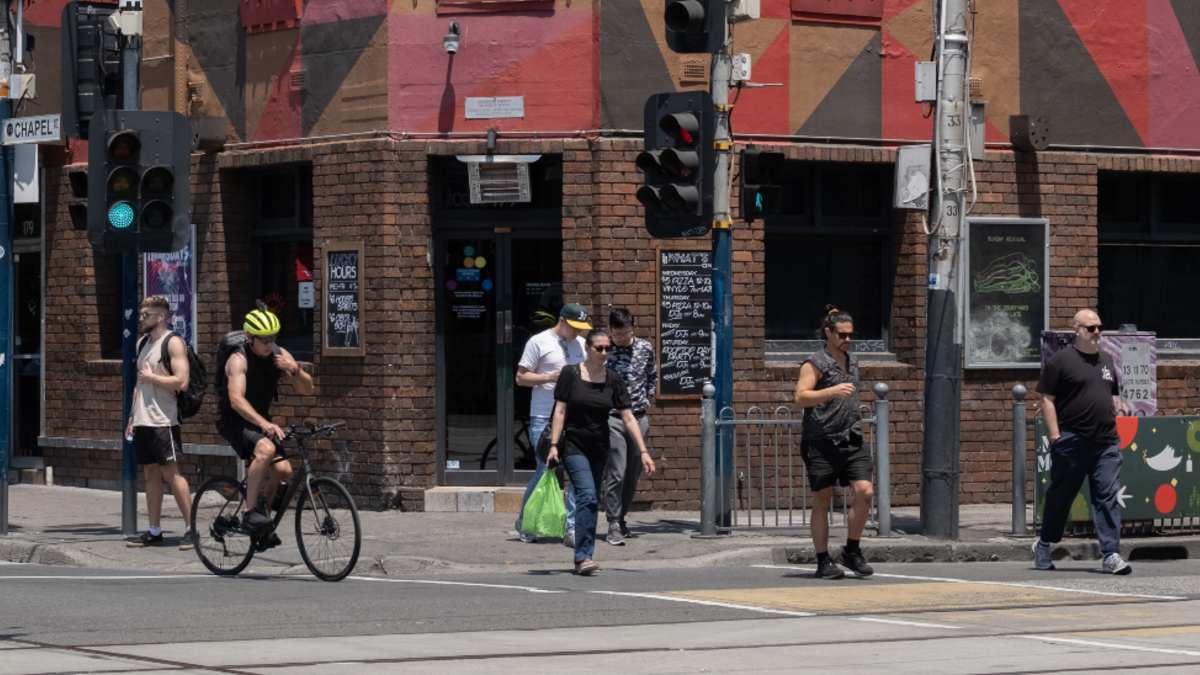Drink driving offenders now face new penalties. Here's what you need to know about the new drink driving laws in Victoria.
Pedestrian road rules in Victoria and safety tips

Most Victorians use walking as a form of regular transportation. Knowing the pedestrian road rules helps ensure everyone stays safe.
The road rules in Victoria apply to all road users, including pedestrians. Whether you’re walking, pushing a bicycle beside you, skateboarding, roller-skating or using a wheelchair or mobility scooter, it’s important to know the road rules that apply.
According to RACV data, four out of five Victorians surveyed use walking as a form of transportation, showing a clear need for pedestrian safety.
“Our insights show that walking is an important form of active transportation in Victoria, with the potential to replace short car trips and even help ease congestion,” says Julia Hunter, General Manager for Mobility at RACV.
“To help keep our roads as safe as possible for all users, it’s important that both pedestrians and motorists know the road safety rules that apply to them.”
Familiarise yourself with the pedestrian road rules in Victoria, as outlined in this article. How many do you know?
Must-know Victorian road rules
In this article
Road rules for pedestrians in Victoria
Crossing a road with lights or a crossing
Where dedicated crossings or pedestrian lights exist, you must use them. You must not cross if facing a red traffic light or red pedestrian light – even if you can’t see any oncoming traffic. You must not cross at a level crossing if there are lights flashing or alarms sounding either.
If the pedestrian traffic lights are red or yellow – and you have not already started crossing – you must not start crossing.
Crossing a road without lights or a crossing
You don’t have to use a dedicated crossing or pedestrian lights if the nearest one is more than 20m away. However, you should use the shortest and most direct route to cross the road and not move into the path of a vehicle in a way that could cause a hazard.
In these circumstances it's best to cross where you can easily see oncoming traffic, and oncoming traffic can see you. Avoid crossing at crests of hills, on bends or at locations where there are parked cars, shrubs or other roadside obstructions that can impede visibility.
Walking on the road
In most cases it’s illegal for pedestrians to walk on the road. However, in the case that there is no footpath or nature strip available, pedestrians are permitted to walk on the road but should travel along the oncoming traffic side of the road (so that you can easily see approaching vehicles). Pedestrians also can’t travel along paths marked as ‘bike lanes’ and should give way to cyclists and other wheeled device users when crossing a path marked as such.
Pedestrians must also obey traffic signs relevant to them (for example, ‘no pedestrians’) and traffic orders given by police.
Shared paths and bike paths
Shared paths can be used by pedestrians, cyclists and e-scooter riders, as well as people using skateboards or rollerskates (or similar wheeled recreational devices).
Both cyclists and e-scooter riders must give way to pedestrians and people using wheeled recreational devices when using a shared path. People using wheeled recreational devices must give way to those on foot.
Bike paths can be used by cyclists, e-scooter riders or those using a wheeled recreational device or wheelchair (or someone pushing a wheelchair). Bike paths cannot be used by pedestrians.

Pedestrians are required to use dedicated crossings or pedestrian lights where they exist. Photo: Shannon Morris.
Pedestrian road rules for motorists
Giving way
Motorists need to give way to pedestrians when turning left or right at most intersections, as well as in slip lanes, shared areas (where vehicles and pedestrians share the road), at pedestrian crossings and when making a U-turn.
There are two exceptions: Pedestrians are required to give way to motorists at roundabouts (unless there is marked pedestrian crossing), and when they intend to cross a road that a motorist is leaving.
Furthermore, a driver is only required to give way to a pedestrian if their line of travel is perpendicular to the edges of the road that the driver’s car is entering. This reinforces the fact that a driver is not required to give way to a pedestrian who wants to cross a road they are leaving.
Motorists should not block or stop on pedestrian crossings unless the three following conditions are met:
- the crossing is immediately before an intersection that does not have traffic lights;
- the crossing is not blocked, and;
- the motorist gives way to any pedestrian on or entering the crossing before entering it themselves.
Children's crossings are common around schools. Motorists and cyclists must give way to pedestrians waiting to cross if the orange 'children crossing' flags are displayed or if there are children crossing signs combined with flashing twin yellow lights. Do not proceed through the crossing until the crossing is clear and there are no pedestrians waiting to cross.
Driveways
Motorists must give way to pedestrians using a footpath that crosses over a private driveway. Motorists must wait for the pedestrian (or cyclist legally using the footpath) to finish crossing the driveway before they proceed to enter it.
Tram stops
‘When a tram stops, you stop’ is one of the golden rules when it comes to driving with trams in Victoria. Some tram stops are built so that pedestrians alight directly onto the road, hence why motorists must stop when they see a tram halt at a tram stop. Motorists must stop behind trams, wait for all passengers to finish crossing the road and for the tram doors to close before proceeding past the tram at no more than 10kph.
Some tram stops have safety zones which are marked by yellow 'safety zone' signs. Motorists and cyclists can drive past trams stopped at a safety zone, but they must drive to the left of the zone. Be mindful that there still may be pedestrians crossing the road and you should drive at a speed that is safe for them.
Pedestrians using tram stops that do not have a marked safety zone should wait until the tram comes to a stop before crossing the road to board.
Dropping off passengers
Motorists should pull over to a complete stop before letting any passengers out of the car – it is illegal for pedestrians to exit a moving vehicle.

Always check before crossing the road, even where you believe vehicles should give way to pedestrians. Photo: Shannon Morris.
Tips for pedestrian road safety in Victoria
In addition to the Victorian Road Safety Rules, Silvia Morris, Senior Driving Instructor for RACV, has a number of tips that can further help motorists and pedestrians create safer roads.
As a pedestrian:
- Approach intersections and crossings ready to stop, even where motorists are required to give way. Check both directions for traffic before crossing.
- Make eye contact with other road users to help ensure you have been seen.
- Wearing bright colours like white, yellow and fluorescent shades can increase visibility for pedestrians.
- If walking at night or in other periods of low light, consider carrying a portable lamp or wearing a headlamp. Reflective strips or clothing can further enhance pedestrian visibility.
- Keep watch for vehicles such as bicycles, motorcycles and e-scooters before crossing the road or bike lanes, as they may be less visible than cars, buses and trucks.
As a motorist:
- Always thoroughly scan the road around you, including driveways and footpaths, not just the road in front of you.
- Drive with caution when approaching an intersection or crossing. Assume that a pedestrian is just around the corner.
- Check at least twice before turning, entering intersections or crossings. Be wary that your car’s blindspots can hide pedestrians and other road users from you.
- Exercise caution in areas frequented by children, such as schools, parks and playgrounds. Children can cross roads unpredictably, so slow down and be extra alert.
- Be cautious when approaching parked vehicles as pedestrians, including children, may be hidden from view.
The information provided is general advice only. Before making any decisions please consider your own circumstances and the Product Disclosure Statement and Target Market Determinations. For copies, visit racv.com.au. As distributor, RACV Insurance Services Pty Ltd AFS Licence No. 230039 receives commission for each policy sold or renewed. Product(s) issued by Insurance Manufacturers of Australia Pty Ltd ABN 93 004 208 084 AFS Licence No. 227678.


